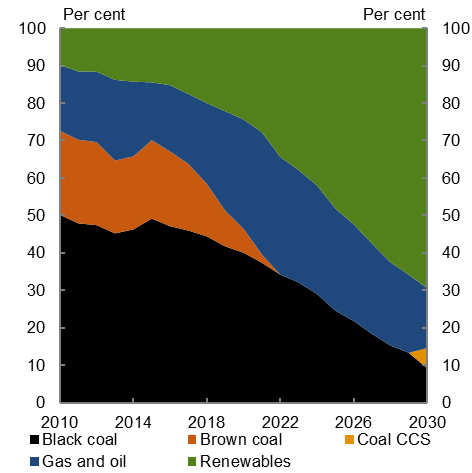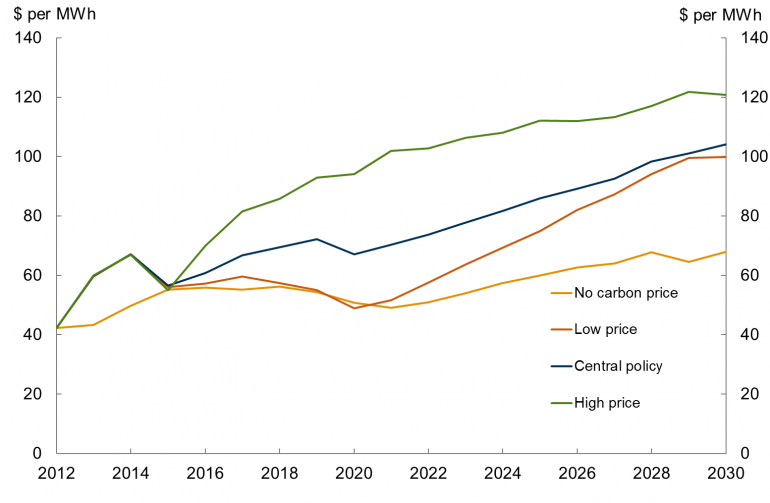70% renewables, $100 carbon price, economy 50% larger
Sometimes Climate Spectator barely scratches the surface of some substantive and interesting new research that comes out, because we quickly get overwhelmed by new events.
The report released by the Climate Change Authority assessing what emission reduction targets Australia should adopt is one such piece of research. This 176 page report, in conjunction with several further hundreds of pages of supporting analyses represent an incredibly impressive piece of work. One could dedicate a whole week to pulling it apart and pondering its conclusions. Unfortunately we can’t manage that and cover all the other important developments that readers want to hear about.
Still there are some things worth highlighting from the economic modelling that was undertaken for this report in our charts of the week.
The first chart shows the Australian Treasury’s estimates of how Australia’s GDP would change over time under four scenarios. One where Australia has no carbon price and doesn’t make any concerted effort to achieve the minimum 5% emission reduction target which is illustrated in orange. Then a bunch involving different carbon price assumptions, of which the high price scenario involves a carbon price hitting $70 per tonne of CO2 in 2020, and rising to about $130 in 2030.
Now when you look at the chart are you having trouble distinguishing between the no carbon price scenario and the other lines?
Even if we adopted policies that involved a pretty high carbon price of $70 by 2020 and $130 by 2030, the economy would still grow by very similar amount and be more than 50% larger than it is today.
Australia’s gross domestic product under different carbon pricing scenarios

Source: The Australian Treasury (2013)
Under the high carbon price scenario ACIL Tasman expects Australia would almost completely transform its electricity system from 10% renewables and 70% coal today, to 70% renewables and about 10% coal within the space of two decades (illustrated below).
Sources of electricity in Australia under the high carbon price scenario

Source: ACIL Tasman
Now that’s not to say that they don’t expect electricity prices to be higher with carbon pricing, as illustrated below. In fact they expect wholesale market prices under the high carbon price scenario to be almost double that of a situation without any carbon pricing.
But the fundamental thing that just doesn’t seem to sink into many politicians skulls, is that while supply of electricity is fundamental to our way of life, its cost is a small component of the economy. It struggles to get above anything much more than 3% of most industry sectors’ cost base. And that’s including the more substantial cost components incurred by electricity networks and retailers (not just generation) which are barely affected by carbon pricing.
Forecasts of electricity generation prices under different carbon price scenarios

Source: ACIL Tasman













